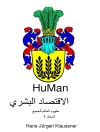This is a best practices manual for advocates attempting to influence lawmaking by executive branch agencies, that is, the adoption of rules and regulations enforceable on the public. This book rests on four foundations:
- ‘The execution of laws is more important than the making of them.’ (Thomas Jefferson) Agencies make administrative law to implement statutory. Rather than ending a process, a statute initiates a constitutional process, that is, agency adoption of administrative laws. Administrative laws, that is, rules and regulations implement legislative laws. Statutes are dead letters until the agency promulgates rules.
- You don’t have a law until the agency tells you that you have a law. And you don’t know what a law means until they tell you what it means. Agencies do both via rulemaking. Agency interpretation and application of legislative law via rulemaking constitute the real law. They are last in law making process making them first in authority. And agencies adopt many rules.
- For every one page of broad legislature-made law, agencies can make ten pages of highly detailed agency-made law. The law as applied is found in the minutiae of administrative rules through which agencies can implement or redirect legislation. In other words, 90 percent of the body of law regulating your principal(s) is written by executive branch agencies.
- Through rulemaking what the legislature gave, an executive agency can take away, and what the legislature wouldn’t give, an executive agency might. For example, using agency discretion an agency can promulgate rules that extend benefits to one group to the exclusion of another.
And, to support the administrative state, taxpayers invest billions of dollars per year to employ and equip millions of state government workers. Each state has from dozens to hundreds of regulatory agencies, departments, boards, and commissions that implement public policy and adopt
and enforce regulations using legislatively delegated authority. They are the modern administrative state.
In terms of money, staff numbers, reach, and authority the administrative state dwarfs the executive, legislative, and judicial branches combined. While the legislative, executive, and judicial branches pursuant to the federal and state constitutions are coequal, in functional reality, the disproportionate size, power, wealth, and reach of the administrative state are so substantial that, since the 1930s, the administrative state has been called ‘the headless fourth branch of government.’ The strategies, skills, and techniques provided by this manual equip practitioners to achieve for their principals the best regulatory environment possible from the administrative state.
Mục lục
Chapter 1: Policy: Constitutional Foundations of U.S.
Agencies and the Administrative Process13
How Administrative Agencies Use Combined Legislative, Executive, and Judicial Powers 14
The Creation of Agencies and Delegated Legislative Authority 16
Clearing the Confusion Among the Terms: Administrative State, Deep State, and Bureaucracy 19
The Modern Administrative State 20
Even If Constitutionally Suspect, the Modern Administrative State Is Secure 21
Chapter 2: The Agency Model
Executive Branch Structure 28
Executive Agency Organizational Structure 29
Agency Tools 34
Menu of Agency Rulemaking Actions 39
Give and Take Among Rulemaking Players 43
Chapter 3: Administrative Procedure(s) Act
Protection from Agency Excess 54
Administrative Procedure(s) Act (APA) 56
Agencies Must Stay Within Limits 57
Insights into the APA Process 58
Revised Model State Administrative Procedures Act (RMSAPA) 60
A Concise Summary of Rulemaking under the RMSAPA 61
‘Regular’ vs. ‘Emergency’ Rulemaking 73
Agency Discretion as to Giving Notice of Rulemaking 75
Chapter 4: Setting the Stage for Executive Agency Lobbying
Step 1.Tracking Regulatory Actions 78
Preparing for the Lobbying Visit 84
Ex Parte Communications 92
Effective Meetings 94
Influencing the Agency as Sales Calls 97
Motivating Agency Staff 99
Building Effective Relationships 104
Difficulties Building Relationships with Agency vs. Legislative Staff 105
Knowing with Whom to Build Relationships 107
Your Assets in Building Rulemaking Relationships 108
Deference by the Other Two Branches 110
Chapter 5: Lobbying Internal and External Influencers on the Rulemaking Proceeding
Consensus in Rulemaking 115
Who Are the Influencers? 116
Agency Lobbyists 123
Technical Experts 124
Face to Face Meeting with Agency Staff 126
Lobbying Staff Checklist 127
Losing Approaches 134
Never Mislead, Lie, or Think You Are Just Too Clever 135
Rulemaking Negotiations 137
Chapter 6: Rule Adoption
Review of the Basic Rulemaking Process 141
Introduction to Key Rulemaking Concepts 142
Why Agencies Develop Rules 143
Overview of Agency Rule Development Process 145
Specific Steps in the Rule Development Process 146
Triggers to Motivating Agency Rulemaking 153
Petitions to Repeal or Change Regulations 155
Informal Public Workshops and Meetings 156
Rule Adoption Hearing 157
Advocates’ Testimony 157
The Nature of the Presiding Authority You Will Be Addressing 158
Our Experience Working with Presiding Authorities 159
Actions for You to Take Before the Rule Adoption Hearing 161
Participation in Rule Adoption 163
Conduct at an Adoption Hearing 165
The Rulemaking Record 168
Chapter 7: Post-Rulemaking
Responding to an Unfavorable Rule 172
Weights of Evidence in a Rule Challenge 175
The Process Is the Punishment 177
Count the Cost Before You Challenge an Agency 180
That the Process Can Be the Punishment Does Not Mean the Process Will Be the Punishment 181
Chapter 8: What You Should Learn, Accept and Challenge on Agency Regulatory Enforcement and Adjudications
A. Understanding the History of Administrative Law and Agency Enforcement 185
B. The Basic Rules of Agency Enforcement and Adjudication 187
C. The Advanced Rules of Agency Enforcement and Adjudication 190
D. Judicial Review and Oversight of Agencies by the Courts 193
E. Case Study 196
F. Conclusion: The Fierce Politics of Judicial Review Since Marbury v. Madison 198
Giới thiệu về tác giả
Robert L. Guyer is a writer and lecturer with Engineering THE LAW, Inc. in Gainesville, Florida. Previously he served as Legislative Counsel for the Ralston Purina Company; Manager of Legislative Affairs for Energizer Power Systems, and Gates Energy Products, Inc.; and as a contract lobbyist, Director of Legislative and Regulatory Affairs for the Rechargeable Battery Recycling Corporation for which he lobbied internationally. Prior to becoming a lobbyist, he served as a pollution control inspector for a regulatory agency and later managed environmental compliance for an electric utility.
He has written seven best-practices lobbying manuals, including the 6-volume Insiders Talk series and recorded the 15-video training seminar the Campaign Method for More Effective State Government Affairs. He provides live seminars publicly and privately. He holds degrees in political science, civil engineering, and law – all from the University of Florida – and is licensed to the practice of law in Florida and the District of Columbia.












